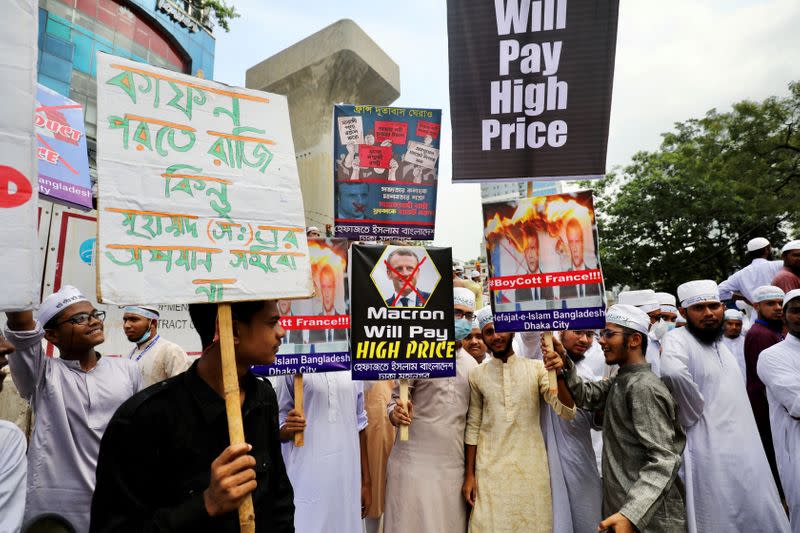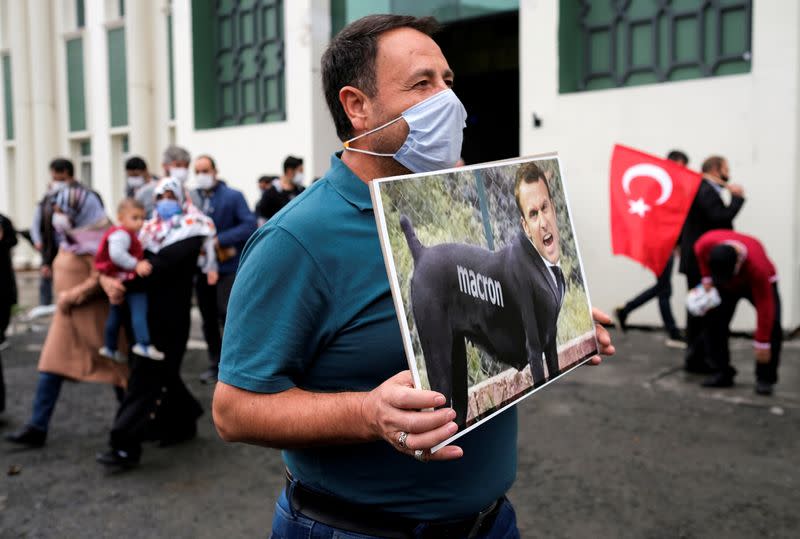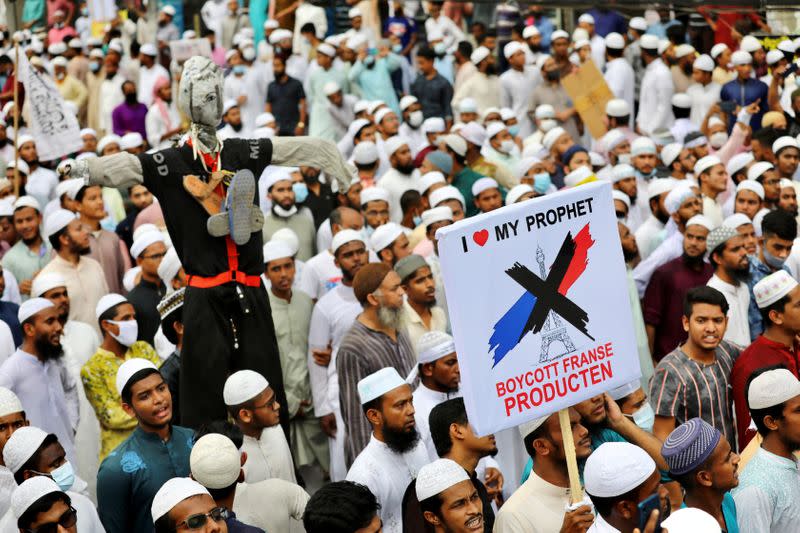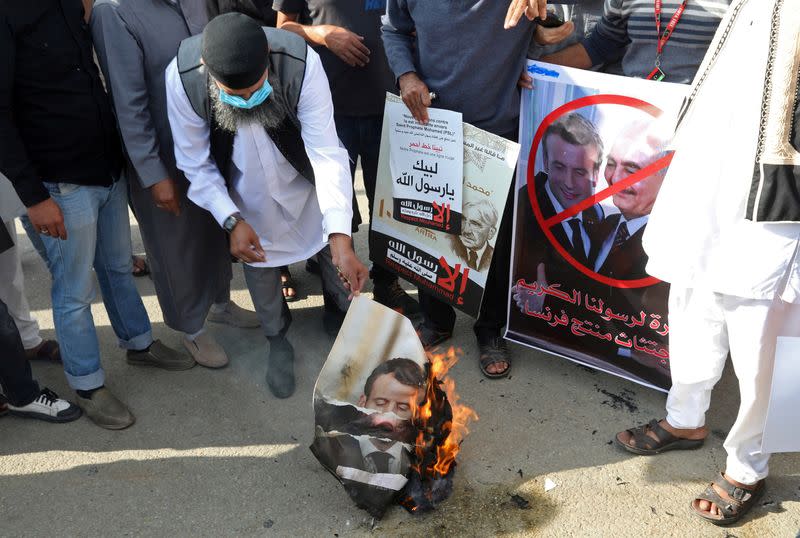Violence marks 15-year furore over cartoons of Prophet Mohammad
(Reuters) - The publication in Europe of cartoons depicting the Prophet Mohammad has been angering Muslims for at least 15 years, resulting in periodic protests and acts of deadly violence worldwide.
Many Muslims regard any depiction of the Prophet as blasphemous and the caricatures as a grave insult to their religion. Some European governments, publications and citizens have invoked the right to free speech to defend the depictions of the Prophet over the years.
Sept. 2005: Danish newspaper Jyllands-Posten publishes 12 cartoon caricatures of the Prophet Mohammad, including one in which he seems to wear a bomb for a turban. They spark protests and official outrage across the Muslim world, which continues for months as dozens of newspapers outside Denmark republish the cartoons.
Jan. 2006: Jyllands-Posten issues an apology.
Feb. 2006: Attacks on Danish diplomatic missions in the Muslim world spread quickly. More than 50 people are killed as police try to quell protests in the Middle East, Africa and Asia.
Feb. 2008: Police arrest two Tunisians and a Dane of Moroccan descent in Denmark for planning to kill cartoonist Kurt Westergaard.
Jan. 2010: Westergaard escapes an attack by a Somali man armed with an axe at his home in Aarhus.
Dec. 2010: Blasts rock Stockholm, killing the bomber and wounding two people, after Swedish news agency TT received a threatening letter referring to Sweden's presence in Afghanistan and caricatures of the Prophet.
Sept. 2012: French satirical weekly Charlie Hebdo publishes cartoons of the Prophet, including some of him naked. Protests again flare up across the Muslim world.
Jan. 2015: Gunmen kill 12 people at the Paris offices of satirical magazine Charlie Hebdo. The magazine later publishes a caricature of the Prophet with a sign saying "Je suis Charlie". Again, violent protests flare up across the Muslim world.
Feb. 2015: A gunman kills two people in attacks on a Copenhagen synagogue and a cafe hosting a free-speech event.
May 2015: Texas police shoot dead two gunmen who opened fire outside an exhibit of caricatures of the Prophet.
Sept. 2020: Charlie Hebdo re-publishes the cartoons on the eve of a trial of suspected accomplices in the 2015 attack on its offices. Later, a man with a meat cleaver wounds two people outside the building where that attack took place. A Muslim boycott of French goods begins to gather momentum.
Oct. 16, 2020: A Chechen teenager beheads a French teacher in the street in a Paris suburb after he showed caricatures of the Prophet during a civics lesson. President Emmanuel Macron calls the teacher a hero and pledges to fight "Islamist separatism", triggering angry protests and calls in Turkey and some other Muslim countries for a boycott of French products.
Oct. 29, 2020: A knife-wielding Tunisian man decapitates a woman and kills two other people in a church in the southern French city of Nice. It remains unclear whether he was motivated by the showing of the cartoons in the Paris school. He shouted 'Allahu Akbar' (God is Greatest) during the attack.
(Editing by Gareth Jones)





